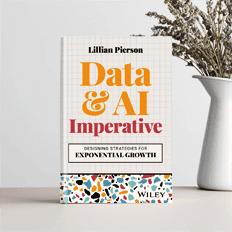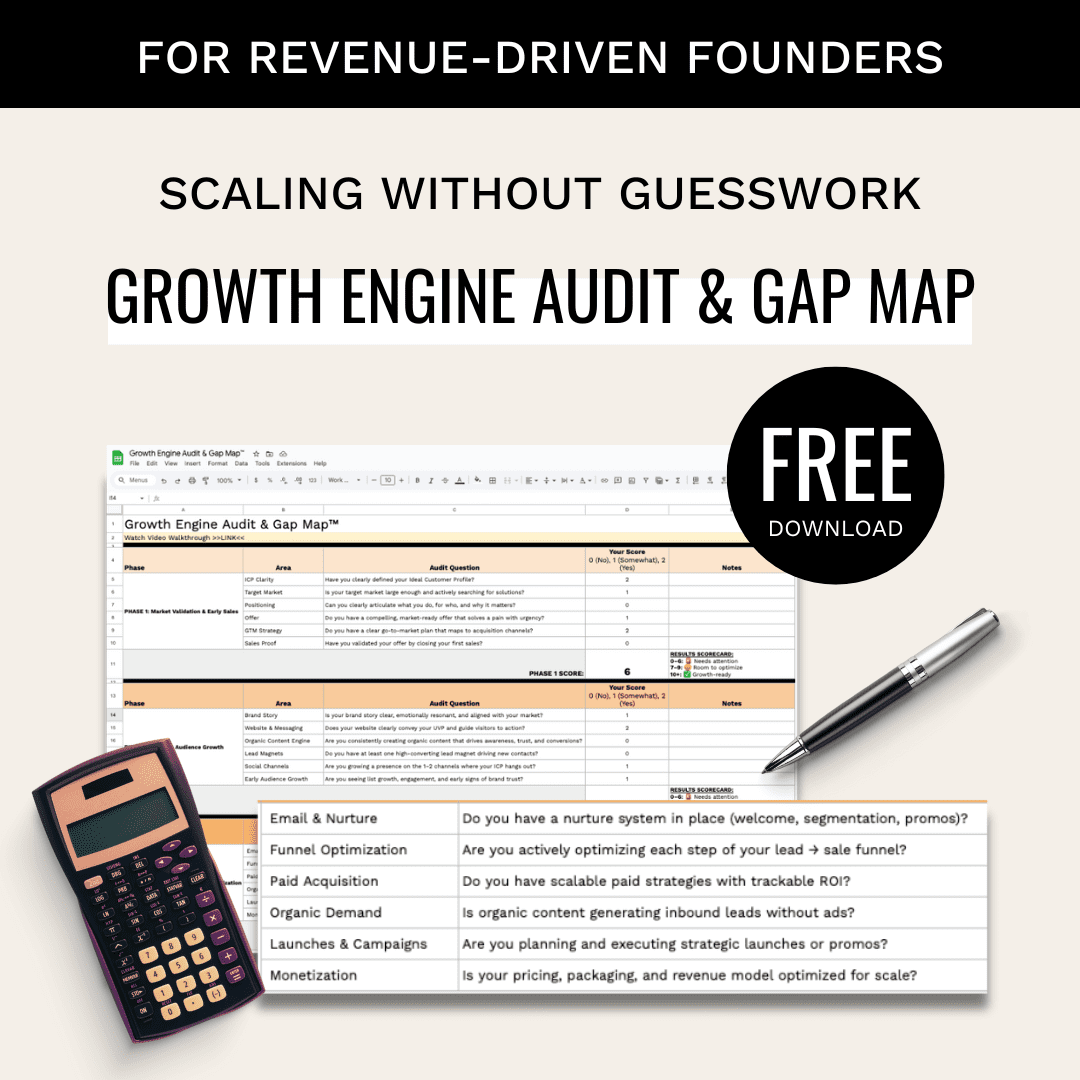B2B buyer interviews are a simple way to understand what your customers want, how they make decisions, and what challenges they face. These interviews help businesses confirm product–market fit, refine marketing strategies, and uncover ways to grow smarter. Here’s what you need to know:
-
What They Help With:
- Discover customer pain points.
- Validate your product before investing heavily.
- Align your strategy with real buyer needs.
- Optimize revenue by targeting the right opportunities.
-
Why They’re Cost-Effective:
- Instead of hiring a Chief Marketing Officer (earning $304,669–$429,040 annually), you can use these interviews to gather actionable insights at a fraction of the cost.
-
How to Run Them:
- Plan: Define your goals and choose participants (e.g., CTOs, IT Directors).
- Ask: Use open, unbiased questions to get honest feedback.
- Analyze: Look for patterns in pain points, decision triggers, and value drivers.
-
Key Results:
- Build strategies based on real customer data.
- Find cost-effective ways to market and grow.
- Stay ahead of market changes with regular interviews.
These interviews are a practical, low-cost way to shape your business strategies and ensure you’re meeting customer needs. Ready to get started? Read on for step-by-step guidance.
The ultimate B2B customer research interview guide
Planning B2B Buyer Interviews
Careful planning is crucial for B2B buyer interviews. It helps you gather meaningful insights, actionable data, and build relationships that matter. Here’s how to set clear goals, pick the right participants, and handle interview logistics effectively.
Setting Interview Goals
Before reaching out to participants, define objectives that match your research needs. Focus on specific areas to guide your questions:
| Goal Category | Key Questions to Answer |
|---|---|
| Product Fit | What problems does our solution solve? How well does it meet user needs? |
| Buying Process | Who influences purchase decisions? What triggers buying consideration? |
| Value Perception | How do buyers evaluate ROI? What alternatives are they considering? |
| Market Position | Where do we stand in the competitive landscape? What sets us apart? |
Choosing the Right Participants
With your goals established, select participants who represent your ideal customers. Include a mix of current and potential buyers to get well-rounded insights. Focus on engaging:
- Decision-makers with budget authority
- Technical evaluators who assess solutions
- End-users who interact with the product daily
- Stakeholders from various industries and company sizes
Some key roles to target:
- Chief Technology Officers (CTOs)
- IT Directors
- Data Engineers
- Business Intelligence Managers
Managing Interview Setup
A well-organized interview setup ensures smooth sessions and high-quality data collection.
1. Schedule Management
Plan 45–60 minute sessions with buffer time. Send calendar invites that include a clear agenda and any pre-interview materials.
2. Technology Setup
Use reliable video conferencing tools that support recording. Test your equipment beforehand to avoid interruptions.
3. Documentation Process
Prepare consent forms covering:
- How the data will be used
- Confidentiality agreements
- Permissions for recording
- Data retention policies
"The key to successful B2B buyer interviews is making participants feel valued and heard. When you demonstrate genuine interest in their challenges and perspectives, they’re more likely to share meaningful insights that can transform your product strategy."
– Lillian Pierson, Founder, Data-Mania
Send participants a preparation document 24–48 hours before the interview. Include details like:
- Interview format and duration
- Main discussion topics
- Any preparation required
- Technical requirements
- Contact information for support
Writing Interview Questions
Once your interview structure is ready, the next step is crafting questions that get useful, actionable insights. The best B2B buyer interview questions combine curiosity with objectivity.
Creating Open Questions
Ask questions that encourage detailed answers. Focus on understanding decision-making processes:
| Question Category | Example Questions | Purpose |
|---|---|---|
| Role Context | "Walk me through your typical workday when evaluating new solutions." | Understand daily challenges and needs |
| Problem Discovery | "What prompted you to look for a new solution?" | Identify pain points and triggers |
| Decision Process | "How do you evaluate potential vendors?" | Map the buying journey |
| Success Metrics | "How will you measure the success of this investment?" | Understand value perception |
Using Follow-Up Questions
Follow-up questions help dig deeper into responses:
- Echo and Expand: Repeat a key point they made and ask them to elaborate.
- Contrast Questions: For example, "How does that compare to your previous approach?"
- Example Requests: Ask for specific instances, like "Could you share a time when that happened?"
These strategies help you explore their answers without steering the conversation.
Removing Question Bias
To keep responses genuine, avoid leading questions. Replace biased phrasing with neutral alternatives:
-
Neutral Alternatives
- Instead of: "Don’t you think our automated solution would save time?"
Use: "How do you currently handle this process?"
- Instead of: "Don’t you think our automated solution would save time?"
-
Clear Language
- Instead of: "What’s your biggest problem with your current vendor?"
Use: "What aspects of your current solution would you change?"
- Instead of: "What’s your biggest problem with your current vendor?"
-
Remove Assumptions
- Instead of: "Why did you choose our competitor’s inferior reporting?"
Use: "What factors influenced your current solution choice?"
- Instead of: "Why did you choose our competitor’s inferior reporting?"
Here’s a quick comparison of biased vs. neutral questions:
| Biased Question | Neutral Alternative |
|---|---|
| "How much time does our competitor’s clunky interface waste?" | "How would you describe your experience with the current interface?" |
| "Wouldn’t you prefer a more modern solution?" | "What features are most important in a new solution?" |
| "Don’t you find manual processes frustrating?" | "How do you feel about your current workflow?" |
sbb-itb-e8c8399
Running Effective Interviews
Making Participants Comfortable
Start with a quick, casual chat to put participants at ease and encourage open feedback. Clearly explain the purpose of the interview, how long it will take (typically 30–45 minutes), how their feedback will be used, confidentiality measures, and whether the session will be recorded. Keep the tone conversational yet professional, and acknowledge their expertise to build trust.
Listening and Adjusting
Active listening helps uncover valuable insights by paying attention to both what’s said and how it’s said. Here’s how to approach it:
| Listening Element | Action | Why It Matters |
|---|---|---|
| Verbal Cues | Take note of key phrases and terminology | Understand industry-specific language |
| Tone Changes | Watch for shifts in tone or emotion | Spot pain points and priorities |
| Response Depth | Notice topics that spark detailed responses | Focus on areas participants care most about |
| Follow-up Timing | Pause for 3–5 seconds after answers | Allow space for deeper thoughts to emerge |
Be flexible with your questions – if participants bring up unexpected but useful points, adjust your approach to explore these areas further. Make sure to document these insights systematically as they evolve.
Recording and Sample Size
Accurate documentation is crucial. Always get explicit consent before recording, using a clear request like this:
"I’d like to record our conversation to ensure I capture your insights accurately. The recording will only be used for internal analysis. Are you okay with this?"
To identify meaningful patterns, conduct at least 8 interviews, ensuring diversity in company size, industry, decision-making roles, and geographic location. During these sessions, document:
- Key quotes
- Non-verbal reactions
- Follow-up questions that led to useful insights
- Any unexpected topics that came up
When you notice no new insights emerging – typically after 8–12 interviews – you can wrap up the process.
Using Interview Results
Once interviews are done, the next step is turning raw data into actionable insights.
Finding Common Themes
Go through transcripts and notes to identify recurring patterns. Focus on these key areas:
- Pain Points: Challenges frequently mentioned by participants
- Decision Triggers: Situations or events that lead to purchase decisions
- Value Drivers: Benefits customers prioritize in solutions
- Objections: Concerns or hesitations commonly voiced
| Theme Category | Data Collection Method | Analysis Approach |
|---|---|---|
| Direct Mentions | Word frequency analysis | Highlight specific phrases and terms used |
| Implied Needs | Context analysis | Uncover underlying issues expressed differently |
| Buying Criteria | Decision factor mapping | List evaluation criteria mentioned |
| Process Steps | Journey mapping | Outline steps in the decision-making process |
Ranking Feedback Importance
Prioritize insights by their strategic relevance:
- Frequency: How often themes appear across interviews
- Impact: How much they influence conversions and sales
- Urgency: How quickly the issue needs to be addressed
- Resource Requirements: Effort and resources required to act on the findings
"Marketing without strategy is a recipe for disaster." – Lillian Pierson, Data-Mania
Use this ranking to focus on what matters most.
Organizing Results
Present your findings in a way that supports clear decision-making. This structure ensures the interview data serves its purpose: guiding strategies based on evidence.
| Analysis Component | Purpose | Output Format |
|---|---|---|
| Theme Summary | Highlights key findings | Executive brief with essential statistics |
| Buyer Journey Map | Visualizes the decision process | Timeline with touchpoints |
| Pain Point Matrix | Ranks customer challenges | Weighted scoring table |
| Action Items | Outlines next steps | Prioritized implementation plan |
A well-organized structure helps translate raw data into a strategy that works.
"Lillian is a KPI-driven, customer-obsessed marketing leader with expertise in growth marketing for tech brands across all industries and business models." – Lillian Pierson, Data-Mania
Conclusion
Buyer interviews play a key role in shaping marketing strategies that truly address customer needs. In the B2B world, these interviews provide insights that help refine target audiences and improve offerings.
To get the most out of them, a structured process is essential – covering everything from planning and selecting participants to analyzing results and taking action. When done right, buyer interviews serve important purposes:
- They reveal customer pain points and untapped opportunities.
- They support data-driven revenue strategies.
- They ensure marketing aligns with changing customer demands.
By conducting these interviews effectively, you create a solid base for strategies that connect with your audience and deliver measurable outcomes. Keeping them on a consistent schedule ensures your marketing stays relevant and responsive to shifts in the market.
"Marketing without strategy is a recipe for disaster." – Lillian Pierson, Founder, Data-Mania
"Without execution, strategy is dead." – Lillian Pierson, Founder, Data-Mania
Treat buyer interviews as an ongoing effort. Regularly revisit and apply their findings to stay ahead of market trends and maintain a competitive edge.
FAQs
How do B2B buyer interviews help confirm product-market fit before making big investments?
B2B buyer interviews are a powerful way to confirm product-market fit before committing to significant investments. By speaking directly with potential customers, businesses can uncover key insights about their needs, challenges, and preferences. This feedback helps refine products and strategies, ensuring they align with market demands.
Understanding your audience reduces the risk of creating solutions that miss the mark. These interviews provide actionable insights that guide smarter decision-making, saving time and resources while boosting your chances of success in the market.
How can I choose the right participants for B2B buyer interviews?
Selecting the right participants for B2B buyer interviews is crucial to gathering meaningful insights. Start by identifying individuals who have direct experience with your product or service, as well as those who influence or make purchasing decisions within their organization. Aim for a diverse group that represents different roles, industries, and company sizes to get a well-rounded perspective.
To ensure quality feedback, prioritize participants who are actively engaged in the buying process or have recently completed it. Use your existing customer database, professional networks, or even LinkedIn to find suitable candidates. Offering incentives, such as gift cards or discounts, can also encourage participation and show appreciation for their time.
How can businesses effectively use insights from B2B buyer interviews to enhance their marketing strategies?
To enhance marketing strategies, businesses should focus on analyzing the insights gathered from B2B buyer interviews. Look for recurring themes, pain points, and decision-making factors to better understand your target audience and refine your messaging.
Data-Mania specializes in helping technology companies leverage such insights through tailored Fractional CMO services, including go-to-market strategies and growth-focused marketing leadership. By aligning your strategies with buyer needs, you can create more targeted campaigns that drive results.
Related posts
- SaaS Go-to-Market Strategy: Step-by-Step Framework
- 5 Steps To Identify B2B Customer Pain Points
- 5 Best Practices for B2B Marketing Automation Success
- Ultimate Guide To VoC Feedback Loop Strategies





